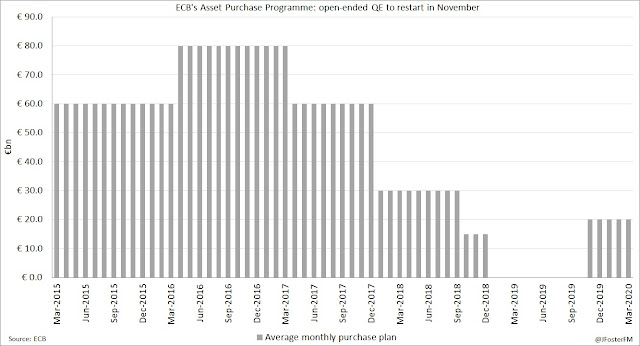This was essentially the reasoning used to justify the previous two rate cuts given that the Board has identified that a tighter labour market is key to inflation sustainably returning to the 2-3% target band. At a speech in the New South Wales' Northern Tablelands last week, RBA Governor Philip Lowe reiterated this message: "there has been an accumulation of evidence over recent times that the economy can sustain lower rates of unemployment and underemployment than previously thought likely".
Also significant were Governor Lowe's comments on global interest rate settings following the recent broad-based shift to easier policy stances by other central banks: "If we did seek to ignore these shifts, our exchange rate would appreciate, which, in the current environment, would be unhelpful in terms of achieving both the inflation target and full employment" and then went on to say "as a small open economy, we have to take the world and global interest rates as we find them".
To recap, the key developments since the RBA's previous meeting have been;
- From offshore: Downside risks to the global economic outlook posed by trade and political uncertainty intensified and with inflation pressures remaining soft the US Federal Reserve and the European Central Bank eased their monetary policy stances. In the US, the range for the fed funds rate was lowered to 1.75-2.0% — the second time rates have been cut in the past 3 months. In Europe, the ECB announced a 5-point stimulus package extending on their use of unconventional measures, including; a further lowering of already negative interest rates, restarting quantitative easing, adjustments to forward guidance, a longer and cheaper form of funding made available to the banking sector, and a 'tiering' of the deposit rate effectively charged on banks' excess reserves.
- Domestically: GDP growth in Q2 came in at 0.5% slowing the annual pace from 1.8% to 1.4% — its weakest since Q3 2009 (see here). The key dynamic was a further contraction in private sector demand, reflecting slowing household spending, weakness in residential construction activity and soft business investment, as robust public demand was kept in train by health-related spending. In contrast to slowing output growth, employment growth remained robust at 2.5% over the year to August — a dynamic helped explained by the ABS's detailed labour force data released last week indicating that almost all of this has been driven by the public sector. Specifically for August, employment increased by a much stronger-than-expected net 34.7k, though that was exceeded by growth in the workforce participation rate to a new record high at 66.2% (see here). As a result, spare capacity in the labour market increased in the month, with the unemployment rate rising from 5.2% to 5.3% — its highest level in a year — while the underemployment and underutilisation rates lifted to 8.6% and 13.8% respectively.
Given the Board's clear focus on the labour market and the Bank's recent commentary, the rise in spare capacity reported in August's Labour Force Survey seals the case for the cash rate to be cut by 25 basis points to 0.75% today. That view is reinforced by the governor's comments on the implications of the recent easing by other central banks on the exchange rate and, in turn, the RBA's employment and inflation objectives.
For reference, the cash rate futures market is pricing in a 78% chance of a rate cut at this meeting and the OIS pricing implies a slightly lower chance at around 74%. Meanwhile, 19 of 25 economists surveyed by Bloomberg Australia are forecasting a rate cut today. Note also that later tonight Governor Lowe is scheduled to deliver a speech (7:20PM AEST), which coincidently is the same sequence of events that occurred when the cash rate was cut in June and July.

























